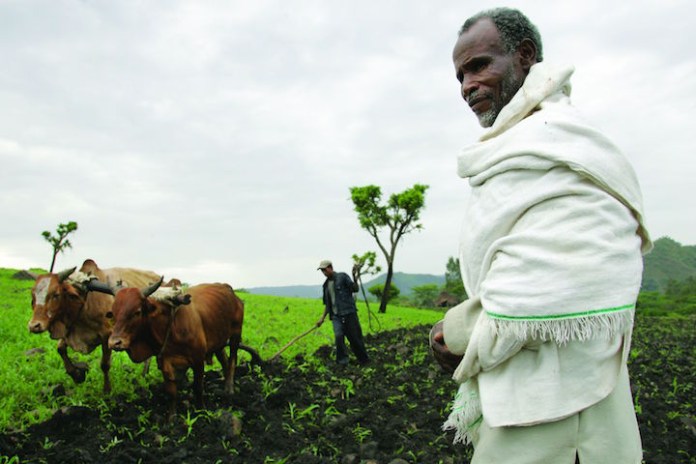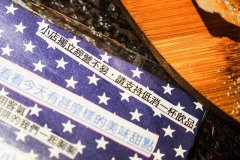Against hard work! Can Fairtrade coffee beans really save the poor?

For professional baristas, please follow the coffee workshop (Wechat official account cafe_style)
From the enthusiastic response of the readers of the White economy these days, we can see that the readers are very concerned about the issue of social inequality in Taiwan. However, the problem of inequality between the rich and the poor exists not only within a country, but also between countries. Although economists embrace trade, will the unequal trade between the poor and the rich be suspected of being exploited in international trade?
Examples of hard work in poor countries, such as child labour and poor labour conditions, abound. For example, in 2013, a garment factory in Bangladesh collapsed, killing 1129 people, while hard-working farmers in international consortiums such as Starbucks Nestl é bought coffee beans cheaply for a long time, giving birth to the existing fair trade system. But does fair trade work? The following article analyzes the feasibility and limitation of fair trade from the perspective of economics, and takes coffee, the origin of fair trade, as a case study.
Why does Fairtrade work?
The most fundamental reason why Fairtrade certification is feasible is that consumers are willing to spend more money for the well-being of farmers. Different from the assumptions in general economics textbooks, consumers in reality care not only about the final quality of the product itself, but also whether the production process of the product is fair or not. The value of Fairtrade certification is that it provides third-party certification so that consumers have enough information to identify which coffee beans are particularly kind to farmers in the production process. By providing information, fair certification establishes a channel for consumers who care about farmers to convey their goodwill to farmers.
Just like organic product certification, consumers who care about the environment and health can buy the ideal goods in mind. In this process, consumers are able to buy good goods in mind, and producers end up selling goods at higher prices, making both sides happy. This is the virtue of trade. In a trade relationship, one party is willing to fight, the other is willing to suffer, and no one forces the other to benefit from it. The same is true of Fairtrade certification, which makes the transaction possible.
It is not surprising that people care who the producer is and are even willing to spend more money. The pudding brothers and sisters who quarreled for a while not long ago are the best examples. Even if it is only pudding made from pudding powder, consumers are still willing to pay for it out of a sense of helping the weak. In the case of coffee beans, Hainmueller, Hiscox, and Sequeira (2011) found that consumers, on average, pay 23% more for Fairtrade coffee beans by actually doing experiments on Ebay.
Conceptually, in fact, how does fair trade work in terms of system? In general, fair trade provides the following guarantees:
The lowest purchase price, but no guarantee of acquisition.
Allocate part of the funds to farmers, provide agricultural technical guidance, build schools and hospitals, and so on.
Financing, providing farmers with short-term loans.
Ensure farmers' working environment, working hours, minimum wage, etc.
In order to obtain Fairtrade certification, farmers must pay additional application fees and annual fees to make up for the transportation, certification, export and other costs incurred in the process of sale. In other words, fair trade is not free for farmers, but a choice. In other words, farmers can decide to spend the cost to obtain certification, or they can choose to support themselves in the market.
The advantages and disadvantages of Fair Trade
According to existing research, Fairtrade has indeed achieved some results. First of all, Fairtrade certification has increased farmers' income, especially in years when the international price of coffee beans has plummeted, and the minimum purchase price is indeed a solid protective net. For example, a sample survey conducted by Bacon (2005) found that when coffee prices plummeted in 2000, Fairtrade certified farmers sold for an average of 0.84 per pound, twice as much as the average commercial bean. Secondly, in the same survey conducted by Bacon (2005), it is found that certified farmers also feel that their lives have become stable subjectively. Finally, because these certifications are usually accompanied by the requirements of environmental protection, fair trade certification promotes the development of sustainable agriculture on the one hand.
On the other hand, there is something critical about fair trade. First, the trading volume of Fairtrade today, in terms of the overall trading volume of coffee beans, is still very small, about 5%. Second, as Dragusanu and Nunn (2014) pointed out, although fair trade increases the income of farmers, the relative money does not flow into the short-term workers employed by these farmers. These short-term workers employed during the harvest season are still living in hardship. Third, Prevezer (2013) during the visit, farmers often complained about the funds used for infrastructure and the opaque decision-making process. Finally, it is inevitable that there are third-party certification agencies in the market that make use of the conscience of consumers to earn ill-gotten gains.
These problems cannot be ignored, but the next problem is even more serious-in essence, fair trade is not a big deal.
Why does Fairtrade not work? Challenges from Economics
Let's treat the Buddha-hearted consumers as fat fish in the pond. At first, the farmers who entered the pool were delighted to have fewer monks and more porridge. Other farmers, seeing whether the farmers in the pool are happy or not, join the ranks of fair certification. However, under the premise that the pool does not get bigger, each additional farmer enters the fair trade pool, each person will get less and less catch. Even so, as long as it is better to go into the pool than to stay outside, farmers will continue to pour in and the profits from fair trade will diminish.
The dividend into Fairtrade will continue to decrease, and farmers will not stop pouring into the pool until it is about the same as the cost of obtaining fair certification. In other words, if the certification body does not limit the number of farmers certified, farmers with certification will not earn much at all in the long run, because there are too many people in the pool, and certification costs. This is also a dilemma that certification bodies must face: on the one hand, they will want more farmers to be protected by fair trade, and on the other hand, the more farmers will be protected, the weaker the protection will be.
Outside of Fair Trade-Ethiopia ECX Commodity Exchange
"it's better to give a fishing rod than a fish."
In the spring of 2008, the Ethiopian government, under the leadership of the economist Dr. Gabre-Madhin, created ECX (Ethiopian Commodity Exchange), the Ethiopian Commodity Institute. The purpose of the establishment is to crack down on fat cat traders and put an end to the fate of small farmers being exploited and deceived. ECX accepts business scope, in addition to coffee, but also includes sesame, lentil, corn, wheat Ethiopia five major crops.
Before ECX, the transaction of coffee beans was completely controlled by middlemen (coffee bean purchasers, processors, exporters). Farmers who produce raw coffee beans are often deceived by these middlemen because of their weak processing information, completely ignorant of the international market and unable to judge the quality of their own coffee beans, so that they can not continue their meals and live in poverty.
In order to take care of farmers, ECX first set up collection centers in major production areas to provide basic logistics services, so that these small farmers can connect to the national market and reduce their dependence on local middlemen. In addition, in cooperation with the American Fine Coffee Association SCAA (Specialty Coffee Association of America), a group of professional coffee appraisers are trained to grade the beans sent by farmers in the laboratory. In addition, in order to enable farmers to obtain first-hand market news, they will also update the latest market quotations regularly through mobile phone text messages.
The various construction of ECX, on the one hand, provides the infrastructure (collection center, computer auction system) needed for the effective operation of the market, on the other hand, it provides a credible grading system for both buyers and sellers. Such a grading system not only brings protection to buyers, but also has the effect of stimulating farmers to strive to improve their quality. Before that, no matter whether the beans were good or bad, the middlemen were forced to buy them at a low price, and which farmer was willing to put his heart into improving his own coffee?
Due to the short implementation of ECX, there is not much related research. In the study of Andersson et al. (2015), it is pointed out that after the establishment of the warehouse by ECX, the difference in coffee price between different producing areas has been significantly reduced, indicating that ECX does improve market efficiency. In the study of Meijerink (2014), it was found that after the establishment of ECX, the trading network of sesame farmers expanded significantly, and farmers were more likely to trade with people they did not know. All in all, with ECX, the market operates more smoothly.
However, where the government intervenes, it should be questioned.
But as long as it is government-led construction, corruption is often the fate that can not be escaped, and ECX is no exception. The corruption purchase case of ECX broke out in 2012, which led World Bank to cancel its original financing. In addition, the price of highly centralized processing to improve market efficiency is that buyers and sellers are not allowed to trade directly and must go through ECX. On the other hand, ECX has a tough rule that buyers are only allowed to actually try it after they buy it. Therefore, before this, buyers can only rely on the naked eye judgment and ECX's own laboratory evaluation of the quality of raw beans. And whether farmers will bribe appraisers, who can guarantee it?
The similarities and differences between Fair Trade and ECX
Here is a brief comparison of the similarities and differences between the two.
Both are systems set up to promote the well-being of farmers. In an abstract sense, both of them improve the operation of the market through the provision of information (Fair Trade Certification / ECX rating Assessment). But the incentives provided by the two are not the same. Fair trade mainly protects farmers with the lowest purchase price. although it can protect farmers when the international market is low, it fails to provide incentives for farmers to actively improve their quality. On the other hand, the grading system of ECX can inspire farmers to work hard and give them the power to bargain.
In addition, the coffee demand stimulated by the two is not the same. Fairtrade depends on consumers' sense of morality, while the grading system (boutique coffee) demands consumers' demand for high-quality coffee. It is not difficult to imagine that the latter's willing price is much higher. According to the aforementioned experiment, the average consumer is willing to spend 23% more on Fairtrade coffee, but the price growth space of boutique coffee is higher. According to the price announced by ECX on April 1st, the list of Cedamo raw beans, a boutique coffee, costs $4 a pound, while the minimum guaranteed purchase price for Fairtrade is only $1.60 per pound (including social assistance). 2 in addition, according to the data released by the American Fine Coffee Association, boutique coffee accounted for about 51% of sales in the United States in 2014, ten times more than the 5% of Fairtrade. three
Of course, price analysis alone is not fair to Fairtrade. Fair trade not only protects farmers' income, but also invests in community infrastructure and environmental protection. However, in contrast, ECX is not only a guarantee to protect farmers from being exploited, but also a kind of encouragement to give farmers the motivation and environment to forge ahead. For example, Fairtrade certification is like giving farmers fish, while ECX is like giving farmers a fishing rod.
Conclusion
Due to many historical factors, low-income countries are often the weak party in international trade. However, international trade is not only a pattern of rich countries exploiting countries with low income. Taiwan, which also depends on international trade for a living, earns a large amount of income from international trade, and its economy grows substantially (but how this income is eventually distributed is another question). It is not only the goodwill of the rich side that can be relied on to save poverty. To improve the operation of the market and provide farmers with an opportunity to grow up, I think it will be another broader road.
Important Notice :
前街咖啡 FrontStreet Coffee has moved to new addredd:
FrontStreet Coffee Address: 315,Donghua East Road,GuangZhou
Tel:020 38364473
- Prev

It's just that there is a cost for a substitute mill? Four risks of baristas helping you grind beans
Professional baristas Please follow the Coffee Workshop (official Wechat account cafe_style) A recent post on Facebook has aroused heated discussion and echoes among many people in the barista community. The main idea of the post is that there is a barista who owns a storefront of his own. After a long period of operation, he often encounters regular customers who bring beans from others or beans bought in the store to ask for exemption.
- Next

The coffee shop is strange: why not just order food, but have to order a drink?
Exchange of professional baristas Please follow the Coffee Workshop (Wechat official account cafe_style) recently I saw a coffee shop in FB responding to the question of guests reducing a drink. I often hear customers think that the rule of low-consumption drinks is unreasonable. Many people will think that since they have come to the store to consume, why not just order food, but must order a drink? It's more expensive for me to order food. Why can't you order it?
Related
- The milk tea cup becomes smaller?! Overlord Tea Girl launches a new "Return to Yunnan" series
- Accused of selling counterfeit and high-priced coffee beans! Well-known boutique coffee brand "Oukelao" bowed and apologized!
- How to make espresso dumplings? Can I eat coffee and glutinous rice balls together?
- Save the unformed and stagnant powder cakes in one second! What is the problem with stagnant water in the powder bowl of the espresso machine?
- What does hand-brewed coffee stop mean? Why is it not recommended to make coffee by hand?
- Is it normal to smell like coffee? Why does coffee smell like alcohol? What's wrong with the strong smell of cold extract ice dripping ice brewed coffee?
- How to solve the problem that hand-brewed coffee extraction takes too long? Why is the water flowing so slowly when making coffee?
- The main points of making Australian white coffee, the proportion details, how does Australian white properly foam and blend the flowers?
- Can ice water make cold extract coffee? What is the difference between room temperature water and ice water for making cold coffee?
- What milk is best for making latte and white Dirty coffee? What is the difference between different brands of fresh milk and pure milk for making coffee?

